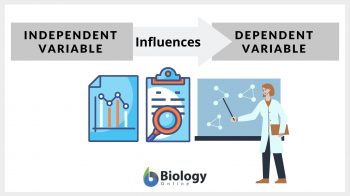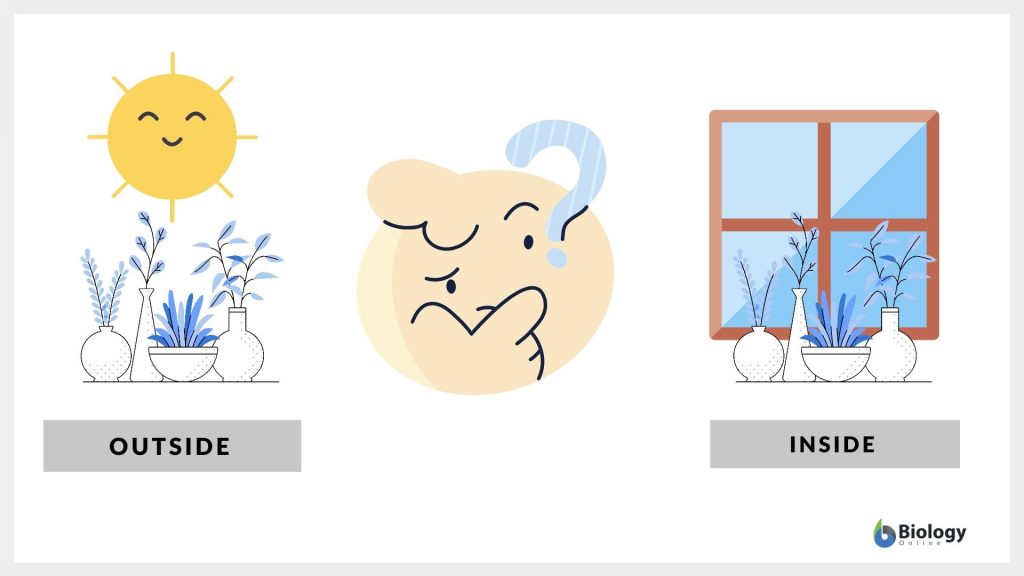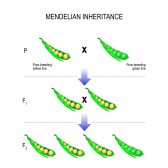
ɪndɪˈpɛndəntˈvæɹ.i.ə.bl̩
The variable that is not affected by other variables
Table of Contents
Independent Variable Definition
To define an independent variable, let us first understand what a variable is. The word “variable” comes from the Latin variabilis, meaning “changeable“. A variable is a quantity or a factor in which the value varies as opposed to a constant in which the value is fixed. In experiments and mathematical modeling, variables help determine the possibility of causation (causal relationship) between them. There are two kinds of variables: (1) independent variables and (2) dependent variables.
An independent variable is a variable in a functional relation wherein the value is not affected by other variables. That is in contrast to a dependent variable that is influenced by other variables. What is the independent variable in an experiment? The independent variable meaning in an experiment is the variable that is to be manipulated and observed. In an independent variable psychology experiment, for instance, it refers to the factor that influences the value of the variable that depends on it.
In science, an independent variable refers to the variable in a functional relation wherein the value is independent. Synonyms: explanatory variable; exposure variable; input variable; manipulated variable; predictor variable; risk factor; regressor.
Let’s take a look at this sample scenario: an experiment was done to check if a newly developed pill is effective in treating patients with cough. Some patients were given the drug while the others were given a placebo (not the real treatment).
To preclude the “placebo” effect — wherein the patient apparently feels better after taking the placebo pill, the patients were not informed if the pill they were taking was real or the placebo. Then, the recovery rates of both groups (i.e. the patients taking the placebo and those taking the real pill) were monitored.
If the patients who were taking the real drug were able to recover significantly faster than the patients taking the placebo, that means the pill was effective in treating cough.
What if both groups had the same recovery rates? What does that mean? If both groups had no significant difference in their recovery rates, that means the pill was not effective against cough.
In this scenario, the variables are the treatments (i.e. the pill or the placebo) and the recovery rates of the patients. The treatment variable is the independent variable whereas the recovery rate variable is the dependent variable.

Independent Variables vs Other Variables
How do you identify an independent variable from the dependent variable? Look at the variables, or factors, in the experiment. Ask yourself this question: Is this factor the “cause”? Typically, the “cause” is the independent variable and its effects are observed on the dependent variable.
You can also identify an independent from a dependent variable by recognizing which variables are being manipulated and which are not. In an experiment, the researchers manipulate the independent variables, not the dependent variables. They manipulate the independent variables to study their influence. Nevertheless, not all independent variables can be manipulated. There are instances wherein a variable does not depend on other variables and yet cannot be manipulated, e.g. age. (Ref. 1)
It should be noted that in some experiments there are other variables present apart from the independent and the dependent variables. Extraneous variables, for example, are the variables that also have an impact on the relationship between the independent and the dependent variables. Going back to the given example above, factors such as age, gender, ethnicity, and medical history (e.g. allergies), may have an effect on the results. Thus, it is essential to specify these factors. Also, controlling the extraneous variables in an experiment is important to come up with more precise conclusions based on the empirical data.
If the experimenter cannot control an extraneous variable, then, this variable is referred to as a confounding variable. (Ref. 2) As the name implies, the presence of a confounding variable will confound the results. The effect cannot be entirely attributed to the independent variable. It may be due to the independent variable or to a confounding variable, and therefore the result will likely be inconclusive.
When variables are kept constant, we refer to them as the controlled variables. Continuing with the given example, we may want to keep the age and weight ranges of the subjects from both groups (those taking the real pill and those taking the placebo) the same. The efficacy of a treatment may depend on the age and the weight of the patient taking the treatment. And so when the age and weight are kept the same for both groups, then, the experimenters can make valid conclusions that otherwise would lead to bias and false claims.
Types of Independent Variables and Uses
The independent variable in research may be of two types: (1) quantitative and (2) qualitative. Quantitative variables are those that differ in amounts or scales. They are numeric variables that answer questions like how many or how often.
Examples of quantitative variables are as follows:
- Differences in the treatment dosages and frequencies. This variable is useful in determining the dosage that produces the desired effects.
- Varying salinities. This variable is useful, for example, in determining the range of salinity that certain organisms can tolerate.
- Varying pH. This variable is useful in determining the pH levels optimal for the growth of certain organisms, for example, the growth of alkaliphiles (alkaline-loving microbes) or acidophiles (acid-loving microbes).
- Nutrient content. This variable is essential in a study that aims at determining the effect of nutrients and the amount required for the normal growth of organisms.
Qualitative variables are non-numerical variables.
Examples of qualitative variables are as follows:
- Different types of strains of a species. This variable is useful in identifying the strain of a crop, for example, that is most resistant to a particular disease.
- Differences in skin pigmentation. This variable can help, for instance, in determining the type of skin pigmentation that will be most sensitive to light exposure.
- The varying methods of how a treatment is administered. “Which route is the most effective? … oral or intravenous?“ These questions will be answered by this variable.
- Questions answerable by yes or no. “Is smoking a factor in lung cancer?” To answer that question, this particular variable is meant to group patients into smokers and non-smokers, and then run tests that will determine if a causal relationship exists between smoking and lung cancer.
An independent variable is sometimes referred to as a predictor variable. That is because this variable helps to “predict” and explain changes in response. For example, the amount of fertilizers, an independent variable, can help predict the extent of plant growth (a dependent variable). In this case, the amount of fertilizers serves as a predictor variable whereas plant growth is the outcome variable.
Designing an Experiment
If you are about to set up an experiment, you must identify your variables, especially the independent variables. To do that, you must select the variables that you think may have an impact on another variable. Then, create a hypothesis based on your variables. Specify your expectation from the experiment by answering this question: “What is the hypothetical effect or effects of the independent variable?”.
Consider looking for similar experiments and learn from them. What has been done so far in that field? How did they design the experiment and manipulated the independent variables to come up with reliable and accurate data?
Levels of Independent Variable
The levels of independent variables pertain to the different categories or groupings of that variable. For instance, in a study about social media use and the hours of sleep per night, the independent variable is social media use and the hours of sleep per night is the dependent variable. Then, social media use is categorized into low, medium, and high, which are a total of three levels.
Independent Variable Examples
As already cited above, the type of treatment (pill vs. placebo) is the independent variable. The treatment variable may be further altered by varying the dosages, the route of administration, the timing, or the duration. The results are monitored and recorded by identifying or measuring physiological, morphological, or behavioral modifications following the treatment.

Consider this another example: A study conducted by Redbooth (a project management software company) suggests that alertness depends on the time of the day and apparently the productivity of office workers worldwide is at its peak at 11 am, then gradually declines, and ultimately plummets after 4 pm. (Ref. 3) In this case, the time of the day is the independent variable and productivity is the dependent variable.
Another example is a clinical trial study conducted by pediatric diabetes centers in the United States on the effectiveness of artificial pancreas in controlling type 1 diabetes in children. By grouping 101 children of ages 6 to 13 into an experimental group (using an artificial pancreas treatment) and a control group (using a standard continuous glucose monitor system and separate insulin pump), they were able to test the efficacy of the new treatment modality. They found that children using the artificial pancreas system had a 7% improvement in keeping blood glucose in the range at daytime and 26% at nighttime relative to the control group. (Ref. 4) In this case, the type of treatment is the independent variable and the amount of blood glucose is the variable that depends on the type of treatment.
Here is a simple application. For example, you want to know if taking your indoor plants outside will make them grow faster than making them stay inside near the window. So, you take a group of indoor plants outside and leave them there for about three hours daily. Then, you let the other group remain inside by the window. After a week, you measure their heights. If you notice a significant change in plant growth that means you may need to give them a daily dose of sunshine for at least three hours each day for better growth. If there is no noticeable difference or the difference seems negligible, then it could mean there’s no need for you to take them out or you might need to do another experiment, this time by extending the duration of sunlight exposure. In this example, the independent variable is the light exposure and the dependent variable is the plant growth.

Now, the question is, how can you be sure that the effect is either significant or negligible? One of the ways to measure the significance of the impact of the independent variable is by applying a statistical test on the data. Choosing the right statistical test (for example, ANOVA analysis) is crucial in any research.
ANOVA test
What is an ANOVA test? ANOVA statistics is a contraction of the term, Analysis of variance. It is a statistical method that determines if the means of three or more independent groups have statistically significant differences between and among them. There are two types: one-way ANOVA vs. two-way ANOVA. A one-way ANOVA involves one independent variable whereas a two-way ANOVA involves two.
A one-way ANOVA example is when you want to test if there is a significant difference in crop yields between the three different fertilizer mixtures on the crop fields. A two-way ANOVA example is when apart from the fertilizer mixture you also want to determine if the crop yield will also vary significantly between different strains.
The null hypothesis (H0) of ANOVA is that there is no statistically significant difference among group means. Conversely, the alternate hypothesis (Ha) is that at least one group shows a statistically significant difference. However, it does not indicate which group. Thus, another statistical test is employed to compare one group with the other, and that is often through a t-test. (Ref. 5)
Try to answer the quiz below to check what you have learned so far about the independent variables.
References
- Independent Variable in Psychology Experiments. (2020). Verywell Mind. https://www.verywellmind.com/what-is-the-independent-variable-2795278
- Different Types of Variables Used in Studying Psychology Hypotheses. (2020). Verywell Mind. https://www.verywellmind.com/what-is-a-variable-2795789
- Oppong, T. (2019, May 20). The time of day has a significant effect on your productivity. Ladders | Business News & Career Advice. https://www.theladders.com/career-advice/the-time-of-day-has-a-significant-effect-on-your-productivity
- Artificial pancreas effectively controls type 1 diabetes in children age 6 and up. (2020). ScienceDaily. https://www.sciencedaily.com/releases/2020/08/200826175653.htm
- Bevans, R. (2020, March 6). One-way ANOVA | When and How to Use It (With Examples). Scribbr. https://www.scribbr.com/statistics/one-way-anova/
©BiologyOnline.com. Content provided and moderated by BiologyOnline Editors.


